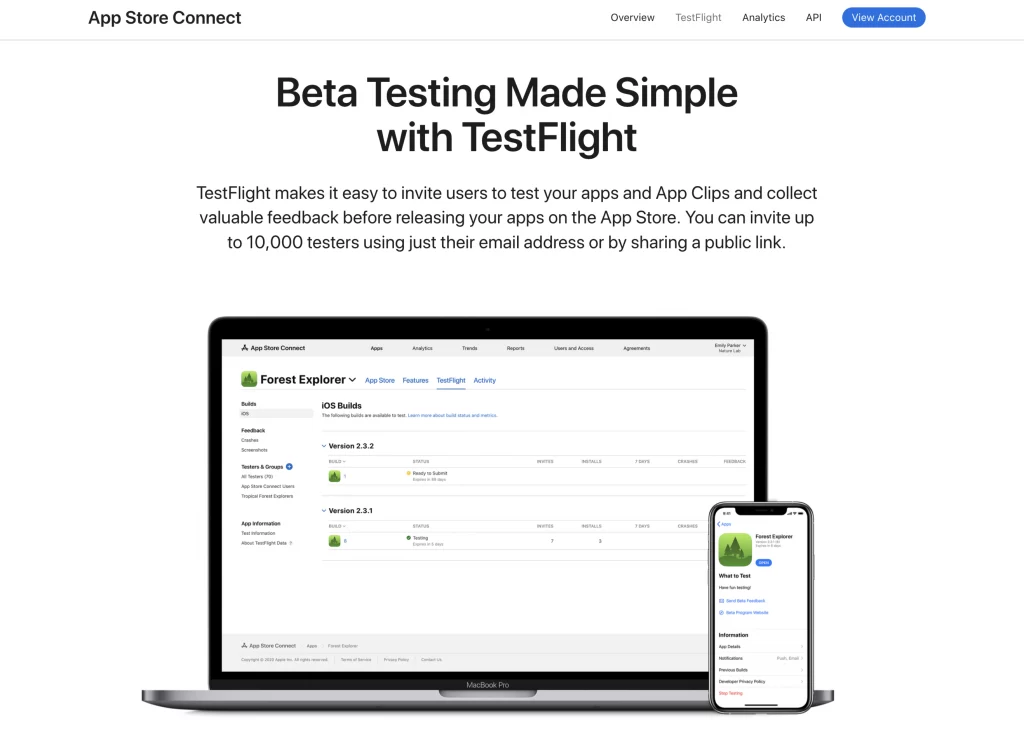Testing Mobile Apps – Pro Tips & Best Practices For Success (2024)
By:
ITS
Category:
Mobile App Development
Introduction:
Testing mobile apps is crucial for success in today’s digital landscape. With the ever-growing number of mobile devices and platforms, ensuring that your app functions seamlessly across all of them is essential.
As users increasingly turn to mobile apps for everything from banking to socializing, the need for thorough testing is more important than ever before.
This in-depth guide will cover the key considerations, tips, and best practices for successful mobile app testing to help you deliver an app that meets the needs and expectations of your users. Whether you’re a seasoned developer or just starting out, this post will provide valuable insights to help you achieve success in testing mobile apps.
Mobile App Testing: Key Considerations
When it comes to testing mobile apps, there are a number of key considerations that developers and testers need to keep in mind. From understanding the importance of mobile app testing to choosing the right testing tools and frameworks, it’s essential to take a comprehensive approach to mobile app testing.
Understanding the Importance of Testing Mobile Apps
Mobile app testing is critical for ensuring that your app functions as intended on a range of devices and operating systems. Testing can help to identify bugs, performance issues, and other potential problems before they impact the app’s usability.
In addition to ensuring that your app is free from bugs and glitches, testing can also help to improve the overall user experience. By conducting usability testing and gathering feedback from real users, you can identify areas for improvement and make changes to your app accordingly.
The Role of Mobile Testing Tools and Frameworks
There are a number of mobile testing tools and frameworks available that can help to streamline the testing process and ensure that your app functions correctly across a range of devices and operating systems. Some popular mobile testing tools include Testflight, Appium, Selenium, and TestComplete.
Mobile testing frameworks, such as the XCTest framework for iOS app testing and the Espresso framework for Android, can also be helpful in automating the testing process and identifying issues more quickly. However, it’s important to choose the right tools and frameworks for your specific needs, as not all tools are created equal.
For example, let’s say you specifically want to run beta testing for your iOS app. In this scenario, testing your app with Testflight would be a good option to consider.

Common Challenges Associated with Testing Mobile Apps
- Device Fragmentation: With so many different devices and operating systems on the market, it can be difficult to ensure that your app functions correctly on all of them.
- Testing Environment setup: Setting up a testing environment that accurately reflects real-world usage scenarios can be challenging.
- Network Conditions: Mobile apps need to be able to function well even in areas with poor network connectivity, which can be difficult to test for.
Types of App Testing: Manual vs. Automated Testing
There are two main types of mobile app testing—manual and automated testing.
Manual testing involves testing the app manually, typically using a physical device or emulator, to identify bugs and other issues. Conversely, automated testing for mobile apps uses software and tools to run tests and identify issues automatically.
Both manual and automated testing have benefits and drawbacks. Manual testing can be time-consuming and labor-intensive, but it allows testers to identify issues that may be difficult to catch with automated testing. While automated testing can be faster and more efficient, it may not catch every issue.
Tips for Effective Mobile App Testing
Test Your App on Real Devices
Ensure Your App is Compatible with Multiple Operating Systems and Devices
Ensuring that your app is compatible with multiple operating systems and devices is crucial for reaching the widest possible audience. However, this can be a challenging task when you consider the wide range of devices and operating systems on the market.
To ensure compatibility, it’s important to conduct thorough testing across a range of devices and operating systems. This can help to identify issues and ensure that your app functions correctly on all technology that could be in the hands of your end-users.
Conduct Usability Testing
Usability testing helps gather feedback from real users to identify areas for improvement in your app’s user interface and user experience.
Usability testing can come in many forms—from in-person testing with real users to remote testing with online tools. It’s important to conduct usability testing throughout the development process to ensure that your app meets the needs and expectations of your users.
Some tips for conducting effective usability testing include:
- Choose a diverse group of test participants that accurately reflects your target audience
- Provide clear instructions and tasks for test participants to complete
- Observe test participants closely to identify areas of confusion or frustration
Prioritize Security Tests
With the increasing prevalence of cyber attacks and data breaches, security testing is more important than ever before. Prioritizing security testing can help to identify vulnerabilities in your app and ensure that sensitive user data is protected.
Penetration testing is one of the best ways to identify potential vulnerabilities in your app.
You should also take steps in your testing process to ensure your app is compliant with all relevant data privacy regulations. This is really important if your app is available in multiple countries and regions where data privacy laws vary.
Someone on your team should also stay up-to-date with the latest security threats and vulnerabilities. Your app might pass security tests today, but if a new form of malicious software is released in a few months, you may need to continue hardening the app to prevent all new threats.
Conduct Regression Testing

Join them by using our services and grow your business.
